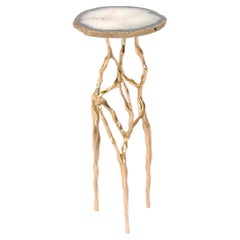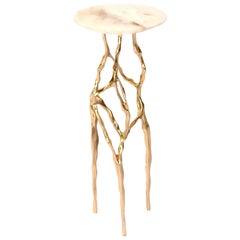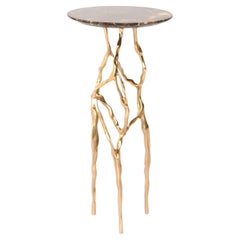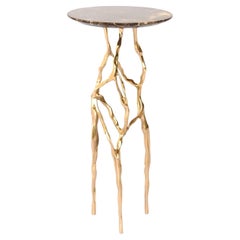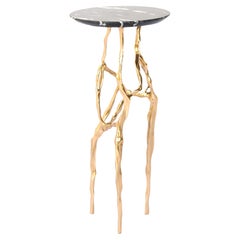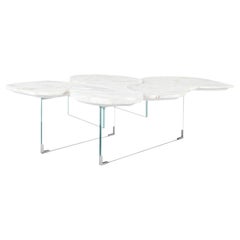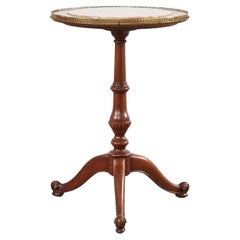Fakasaka Sid
2010s Brazilian Modern Coffee and Cocktail Tables
Agate, Bronze
2010s Brazilian Modern Coffee and Cocktail Tables
Onyx, Bronze
2010s Brazilian Modern Coffee and Cocktail Tables
Marble, Bronze
2010s Brazilian Modern Coffee and Cocktail Tables
Marble, Bronze
2010s Brazilian Modern Coffee and Cocktail Tables
Marble, Bronze
People Also Browsed
21st Century and Contemporary Portuguese Modern Coffee and Cocktail Tables
Marble, Carrara Marble, Stainless Steel
20th Century English Georgian Side Tables
Marble, Brass
Mid-20th Century Italian Neoclassical Side Tables
Carrara Marble, Marble
21st Century and Contemporary Portuguese Modern Coffee and Cocktail Tables
Carrara Marble, Marble, Onyx, Brass, Stainless Steel
1990s Italian Mid-Century Modern Coffee and Cocktail Tables
Marble, Brass
20th Century American Organic Modern Side Tables
Gesso, Wood, Giltwood
21st Century and Contemporary North American Modern Side Tables
Granite
21st Century and Contemporary French Brutalist Side Tables
Bronze
Mid-20th Century Neoclassical Side Tables
Marble
21st Century and Contemporary Portuguese Modern Coffee and Cocktail Tables
Carrara Marble, Marble, Brass
21st Century and Contemporary Portuguese Modern Coffee and Cocktail Tables
Onyx, Carrara Marble, Travertine
21st Century and Contemporary Italian Modern Side Tables
Marble
21st Century and Contemporary Portuguese Mid-Century Modern Coffee and C...
Marble, Stainless Steel
Early 20th Century French Victorian Figurative Sculptures
Bronze
21st Century and Contemporary Portuguese Mid-Century Modern Coffee and C...
Onyx, Carrara Marble, Brass
21st Century and Contemporary Portuguese Modern Coffee and Cocktail Tables
Onyx, Marble
A Close Look at modern Furniture
The late 19th and early 20th centuries saw sweeping social change and major scientific advances — both of which contributed to a new aesthetic: modernism. Rejecting the rigidity of Victorian artistic conventions, modernists sought a new means of expression. References to the natural world and ornate classical embellishments gave way to the sleek simplicity of the Machine Age. Architect Philip Johnson characterized the hallmarks of modernism as “machine-like simplicity, smoothness or surface [and] avoidance of ornament.”
Early practitioners of modernist design include the De Stijl (“The Style”) group, founded in the Netherlands in 1917, and the Bauhaus School, founded two years later in Germany.
Followers of both groups produced sleek, spare designs — many of which became icons of daily life in the 20th century. The modernists rejected both natural and historical references and relied primarily on industrial materials such as metal, glass, plywood, and, later, plastics. While Bauhaus principals Marcel Breuer and Ludwig Mies van der Rohe created furniture from mass-produced, chrome-plated steel, American visionaries like Charles and Ray Eames worked in materials as novel as molded plywood and fiberglass. Today, Breuer’s Wassily chair, Mies van der Rohe’s Barcelona chair — crafted with his romantic partner, designer Lilly Reich — and the Eames lounge chair are emblems of progressive design and vintage originals are prized cornerstones of collections.
It’s difficult to overstate the influence that modernism continues to wield over designers and architects — and equally difficult to overstate how revolutionary it was when it first appeared a century ago. But because modernist furniture designs are so simple, they can blend in seamlessly with just about any type of décor. Don’t overlook them.
On the Origins of brazilian
More often than not, vintage mid-century Brazilian furniture designs, with their gleaming wood, soft leathers and inviting shapes, share a sensuous, unique quality that distinguishes them from the more rectilinear output of American and Scandinavian makers of the same era.
Commencing in the 1940s and '50s, a group of architects and designers transformed the local cultural landscape in Brazil, merging the modernist vernacular popular in Europe and the United States with the South American country's traditional techniques and indigenous materials.
Key mid-century influencers on Brazilian furniture design include natives Oscar Niemeyer, Sergio Rodrigues and José Zanine Caldas as well as such European immigrants as Joaquim Tenreiro, Jean Gillon and Jorge Zalszupin. These creators frequently collaborated; for instance, Niemeyer, an internationally acclaimed architect, commissioned many of them to furnish his residential and institutional buildings.
The popularity of Brazilian modern furniture has made household names of these designers and other greats. Their particular brand of modernism is characterized by an émigré point of view (some were Lithuanian, German, Polish, Ukrainian, Portuguese, and Italian), a preference for highly figured indigenous Brazilian woods, a reverence for nature as an inspiration and an atelier or small-production mentality.
Hallmarks of Brazilian mid-century design include smooth, sculptural forms and the use of native woods like rosewood, jacaranda and pequi. The work of designers today exhibits many of the same qualities, though with a marked interest in exploring new materials (witness the Campana Brothers' stuffed-animal chairs) and an emphasis on looking inward rather than to other countries for inspiration.
Find a collection of vintage Brazilian furniture on 1stDibs that includes chairs, sofas, tables and more.
Finding the Right coffee-tables-cocktail-tables for You
As a practical focal point in your living area, antique and vintage coffee tables and cocktail tables are an invaluable addition to any interior.
Low tables that were initially used as tea tables or coffee tables have been around since at least the mid- to late-1800s. Early coffee tables surfaced in Victorian-era England, likely influenced by the use of tea tables in Japanese tea gardens. In the United States, furniture makers worked to introduce low, long tables into their offerings as the popularity of coffee and “coffee breaks” took hold during the late 19th century and early 20th century.
It didn’t take long for coffee tables and cocktail tables to become a design staple and for consumers to recognize their role in entertaining no matter what beverages were being served. Originally, these tables were as simple as they are practical — as high as your sofa and made primarily of wood. In recent years, however, metal, glass and plastics have become popular in coffee tables and cocktail tables, and design hasn’t been restricted to the conventional low profile, either.
Visionary craftspeople such as Paul Evans introduced bold, geometric designs that challenge the traditional idea of what a coffee table can be. The elongated rectangles and wide boxy forms of Evans’s desirable Cityscape coffee table, for example, will meet your needs but undoubtedly prove imposing in your living space.
If you’re shopping for an older coffee table to bring into your home — be it an antique Georgian-style coffee table made of mahogany or walnut with decorative inlays or a classic square mid-century modern piece comprised of rosewood designed by the likes of Ettore Sottsass — there are a few things you should keep in mind.
Both the table itself and what you put on it should align with the overall design of the room, not just by what you think looks fashionable in isolation. According to interior designer Tamara Eaton, the material of your vintage coffee table is something you need to consider. “With a glass coffee table, you also have to think about the surface underneath, like the rug or floor,” she says. “With wood and stone tables, you think about what’s on top.”
Find the perfect centerpiece for any room, no matter what your personal furniture style on 1stDibs. Browse a vast selection of antique, new and vintage coffee table and cocktail tables today.
Read More
Why Drew McGukin’s Colorful Home Differs from Those of His Clients
The New York–based designer has a high-impact style that's all his own, as his loft in the Chelsea Flower District makes abundantly clear.
New Orleans’ Lee Ledbetter Makes Design Magic by Mixing Past and Present
The Louisiana-born and -bred architect talks to 1stdibs about the art of making timeless places that matter.
How a Modernist Hamptons Home on the Water Became the Ideal Weekend Refuge
Damon Liss and Stelle Lomont Rouhani Architects collaborated on this serene getaway for a minimalism-minded Manhattan family of four.
Desert Modern Designer Arthur Elrod Finally Gets His Day in the Sun
The Palm Springs interior decorator developed a mid-century style that defined the vacation homes of celebrities and other notables, including Bob Hope and Lucille Ball.
Artelinea, Mexico City’s One-Stop Contemporary Design Shop, Paves the Way for a New Wave of Mexican Designers
Wielding her influence on the international scene, founding partner Andrea Cesarman expands the platform for Mexican artisans.
From the Hamptons to Palm Springs, FormArch’s Homes Embody Both Comfort and Cool
The houses from this New York studio cloak modernist tendencies within what are often more traditional trappings.
Wendy Haworth’s Luminous Spaces Epitomize L.A. Ease
For the California designer, authenticity and the unusual are the keys to cool, timeless interiors.
